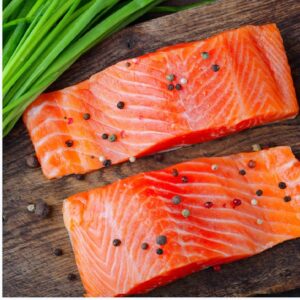The following was written by Rabbi Yair Hoffman for the Five Towns Jewish Times: Brooklyn, NY – Rabbis from Kashrus agencies across the country gathered last night in Brooklyn to see and hear how to remove the Anisakis worm from fish. The seminar was sponsored by the Vaad HaKashrus of Flatbush, under the direction of its Rav HaMachshir, Rabbi Meir Goldberg. The Vaad had flown in Rabbi Shneur Zalman Revach and his assistant Yehudah to demonstrate. The event was videoed and projected so the hundreds of participants could better see. Representatives from CRC in Chicago, Star K in Baltimore and Kashrus agencies across the country flew in to attend the seminar. The OU, the Vaad of Queens, the Five Towns Vaad HaKashrus was also in attendance. Among the other attendees were Rabbi Meir Goldberg – Vaad Hakashrus of Flatbush, Rabbi Tzvi S. Goldberg – Vaad Hakashrus of Flatbush, Rabbi Mordechai Taitelbaum – Vaad Hakashrus of Flatbush, Rabbi Ahron Mandel – Vaad Hakashrus of Flatbush, Rabbi Chaim Goldberg -OU, Rabbi Shmuel Heinneman – Star K, Rabbi Meir Kurcfeld – Star K, Rabbi Sholem Fishbane – cRc of Chicago, Rabbi Dovid Cohen – cRc of Chicago, Rabbi Yosef Eisen – Vaad of the Five Towns, Rabbi Zechariah Adler- Kehilah Kashrus, Rabbi Chaim Schwartz – Vaad of Queens, Rabbi Yechiel Babad – Tartikover Rov, Rabbi Moshe Y. Blumenberg – Tartikover Beis Din, Rabbi Dovid Babad – Tartikover Beis Din, Rabbi Luzer Weiss – NYS Dept of Agriculture Kosher Law Enforcement, Rabbi Binyomin Bess, Rabbi Yisroel P. Gornish, Rabbi Moshe Harari Raful, Rabbi Yosef H. Ilovits – Machon L’bidikas Tolayim, Rabbi Yaakov Wagschal – New Square Kashrus, Rabbi Jakobowitz – Rosh Hamashgichim Nirbater, Rabbi Moshe Busso -Shaarei Tzion, Rabbi Gershon Tannebaum – Igud Harrabonim, Rabbi Usher David – Rosh Yeshiva Emek Halacha , Rabbi Berish Schapiro – Naroler Rov, Rabbi Avraham Weisner – KCL, Rabbi J. Horowitz Merkaz Hatefilla, Rabbi G. Bald – Irguin Shiurey Torah, Rabbi Yosef Wikler – Editor Kashrus Magazine, Rabbi Moshe Yaged, Rabbi Yudel Shain – Rabbi David Weber – Mashgiach for R’ Asher Eckstein Belzer Dayan, Rabbi Mosher Weiner – Kashrus Information Center/ Kashrus Information Service, R’ Yehuda Green, Rabbi Yair Hoffman, Rabbi Doniel Epstein – OU, Rabbi Moshe Farkas, R’ Yitzchak Kaufman, R’ Dovid Fingerer, R’ Avrum Leib Weiss, and Rabbi Avraham Brykman. The six minute video was made to review what was shown. (Source: Five Towns Jewish Times)







